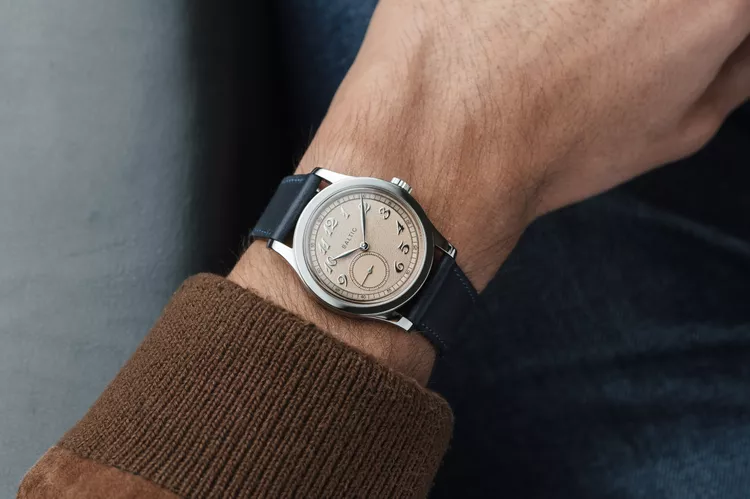Then and now – emerging trends in the independent watch industry
Today, we’re focusing on some emerging trends that we’ve observed in independent watchmaking over the last five years. Laying out what has changed will help us better understand where things are heading in the future. These emerging trends exist on different levels— one geared toward how the community interacts with their favorite indies and the other directed at evolving beyond outdated conventions in the industry.
Moving toward art (...in a good way)
Without doubt, social media is the foundation on which modern independent watchmaking is built. The various platforms lowered the barrier of entry to discover independent brands, created awareness at a scale that print ads could only dream of, and ultimately, helped propel the growth of the industry and community as a whole. For a long time, social media became the primary (and for many, only) channel to experience our favorite brands’ creations.
When we reviewed MB&F and De Bethune’s latest coffee table books, we could tell that the tides were turning. All three books provide collectors and enthusiasts with the ability to dive deeper into each brand’s philosophy, stories, and timepieces. It may seem trivial (“it’s only a book!”), but the recent introduction of high-quality print publications is important in two ways. First, the books scratch an itch that many collectors have: they all want more ways to engage with their favorite brands. Social media is not enough. Second, the more ways that collectors and enthusiasts can engage brands, the more independent watchmaking moves towards a bonafide art form. What do we mean by this?
Image: “MB&F’s recent publication, strong recommendation to get your own copy!”
In the art world, there are a plethora of different ways to engage and admire art. Very few of those ways require ownership. Imagine if owning a Caravaggio was the only way to appreciate the artist and his works. Thankfully, there are museums, books, prints, courses on art history, hands-on courses to develop artistic skills, the list goes on and on. With a massive online community of admirers – comparable to the admirers of any other artist – independent watchmaking is more ready than ever to build out a similar ecosystem where engagement isn’t limited to social media. Our hope is that these coffee table books by MB&F and De Bethune are recognized by other brands as necessary, complementary ways to broaden how collectors and enthusiasts engage and admire the work of indie brands outside of social media.
Moving beyond outdated conventions
When Urwerk, MB&F, and De Bethune launched their brands, the novelty of each lay in putting together things that didn’t seem to belong. Avant-garde aesthetics with a focus on traditional craftsmanship? Of course, there is no surprise now. We’ve witnessed how each brand has created timepieces that embody and smooth the rough edges of that contradiction. In 2023, there are new indie brands tackling outdated conventions, creating watches that many would have imagined unlikely not long ago.
Can a US$500 watch be considered well designed by the world’s biggest indie collectors? 5 years ago, this question would have been preposterous. The best designed watches frequently coincide with the biggest price tags. Sure, maybe some would point to Swatch or Ikepod, but surely nothing mechanical and nothing with a traditional aesthetic. Today, Baltic Watches have blown the doors off of an old truth – that affordable watches don’t have top-shelf designs. With watches ranging from US$500 to US$2,000, the brand has pushed design into the spotlight, creating a fan favorite amongst luxury independent watch collectors without any of the typical markers of a luxury watch (handmade finishing, in-house movements, or haute complications).
Image: Classic aesthetics at incredible prices, Baltic Watches’ MR01 (taken from this page)
Others have done something similar with traditionally “haute” complications. Habring2 released the Doppel38 last year – a 38mm, split-second chronograph for under US$10,000. The inventor of IWC’s Doppelchronograph, Richard and Maria Habring have pushed the chronograph complication to places and prices that were previously considered improbable, at best.
Both these trends point toward something that many of us feel – that the last 5-7 years of social media has built a great foundation for independent watchmaking. Many brands have bigger fan bases than ever, longer waiting lists than ever, and find themselves in a position as businesses that is radically different than the one they were in not long ago. Now the question is, what will the industry build on this foundation?
From our vantage point, we’re aligned with the idea that the watch community needs more touch points with the timepieces that they love. Social media will always be a place for collectors and enthusiasts to establish baseline knowledge of timepieces, but there’s much more value in seeing them in the metal as well as meeting fellow collectors as well as the watchmakers. That’s why we’ve opened our first space outside of Boston. More than a retail location, it’s a place for collectors and enthusiasts to dive deeper into independent watchmaking through community gatherings. To swing by for a visit, DM us on Instagram.


